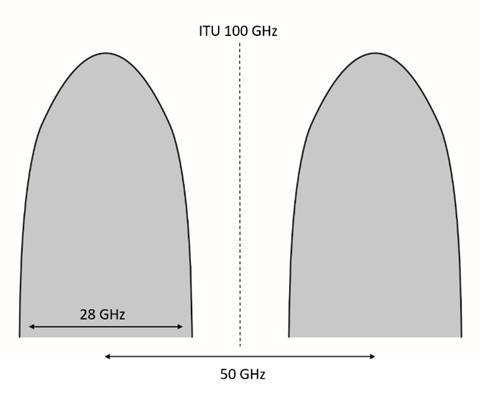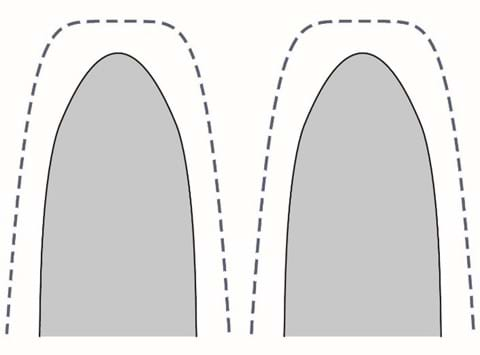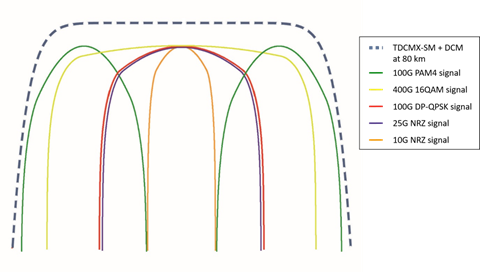Learn how to mitigate Chromatic Dispersion in 100G DWDM PAM4 Links
On: Nov 16, 2021
In: Optical Communication
For dense wavelength-division multiplexing DWDM links up to 80 km, 100G PAM4 QSFP28 transceivers offer reduced cost, lower power consumption, and smaller footprint than conventional coherent transceivers, but at the cost of having to accurately manage chromatic dispersion (CD).
Far from a showstopper, we will see that compensating CD in PAM4 links is quite simple and demonstrate this by drawing a few examples.
When transmitted beyond a few kilometers, 100G DWDM PAM4 requires accurate optical CD compensation; the tolerance of the receivers varies in the order of ±50 to ±100ps/nm. CD has been managed effectively for many years in long-haul direct-detect systems before the advent of coherent solutions. Tunable dispersion compensation modules (TDCM) based on fiber Bragg grating have been deployed for this purpose in the hundreds of thousands of units. This blog discusses how easy CD can be managed for 100G PAM4 and multi-rate applications.
Using 100G DWDM PAM4 is a great way to minimize the cost per bit ratio of a link, as it is possible to reach up to 4 Tb/s in a single fiber, with a CAPEX and OPEX friendly solution. It has been successfully deployed, namely in Data Center Interconnect (DCI), enterprise networks, and mobile access applications.

Commercially-available 100G DWDM PAM4 QSFP28 transceivers are using a single or dual wavelength configuration to deliver 100 Gb/s. The first instance will have a transmitting baud rate of 56 Gbaud/s centered on the 100 GHz ITU whereas the two carrier approach will use a reduced 28 Gbaud/s baud rate, but each of them is offset by 25 GHz from the center frequency of an ITU 100 GHz channel, as shown in Figure 1

Two-carrier 100G DWDM PAM4 CD solution
The two carriers 100G PAM4 transceivers, therefore, operate on a 50 GHz ITU grid, which is commonly used in the industry. In order to overcome the accumulation of chromatic dispersion in the optical fiber, a single TDCM supporting a 50 GHz channel grid may be used to compensate all the C-band channels at the same time in a point-to-point configuration.
As shown in Fig. 2 below, TeraXion’s TDCMX-SM is perfectly adapted to 100G DWDM PAM4 since it provides a bandwidth of 30 GHz and a tuning range covering 0 to 80 km, which prevents the optical signal from being spectrally clipped.
With this single, marker-sized module, it is also possible to actively offset the grid by ±30 GHz and to maximize the optical signal-to-noise ratio (OSNR) thanks to its low insertion loss.

Single-carrier 100G DWDM PAM4 CD solution
Single-carrier 100G PAM4 transceivers are perfectly suited for 100GHz grid optical communications systems. They can be used along other channels transmitting different signal types, like 10G, 25G, 100G, and 400G coherent, through the same DWDM line system. This makes for flexible and future-proof networks.
TeraXion’s 100 GHz-spacing TDCMX-SM provides a bandwidth of at least 50 GHz over the full tuning range from 0 to 80 km. This BW enables the transmission of any mixed signals between 10 and 100 Gb/s.
For systems compatible with 400G coherent signals, the same TDCMX-SM offers a 68 GHz bandwidth up to 40 km, which is sufficiently large to avoid signal clipping. To reach 80 km, it is possible to cascade a wide-bandwidth fixed DCM to maintain the 68 GHz passband to get the results shown in Figure 3.
Conclusion
Compensating chromatic dispersion on the physical layer with the TDCMX-SM is simple and enables the use of cost-effective, high data rate direct-detect solutions such as 100G PAM4 in longer links. The TDCMX-SM is a small, easy-to-integrate module perfectly adapted to meet the needs of high data rate direct-detect transmission up to 80 km.

